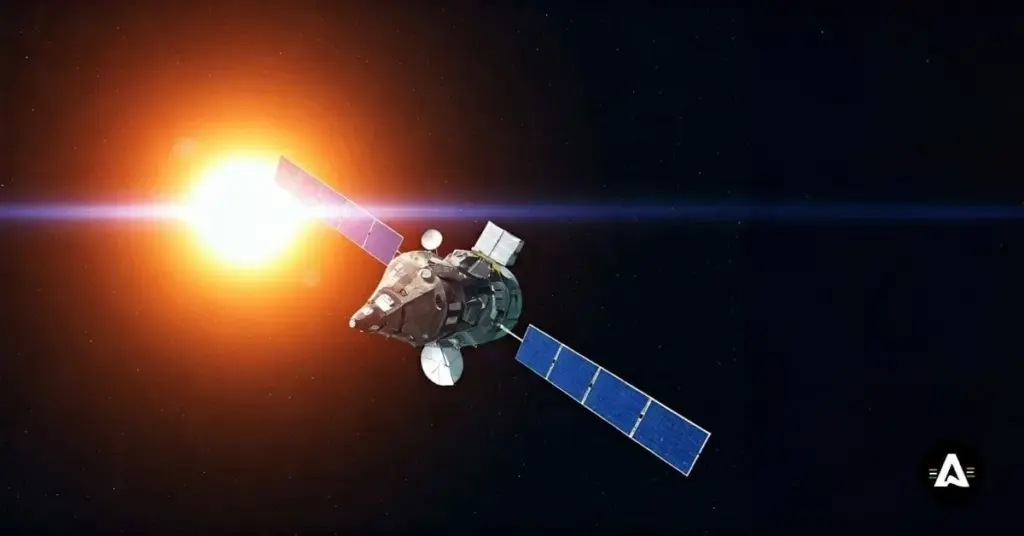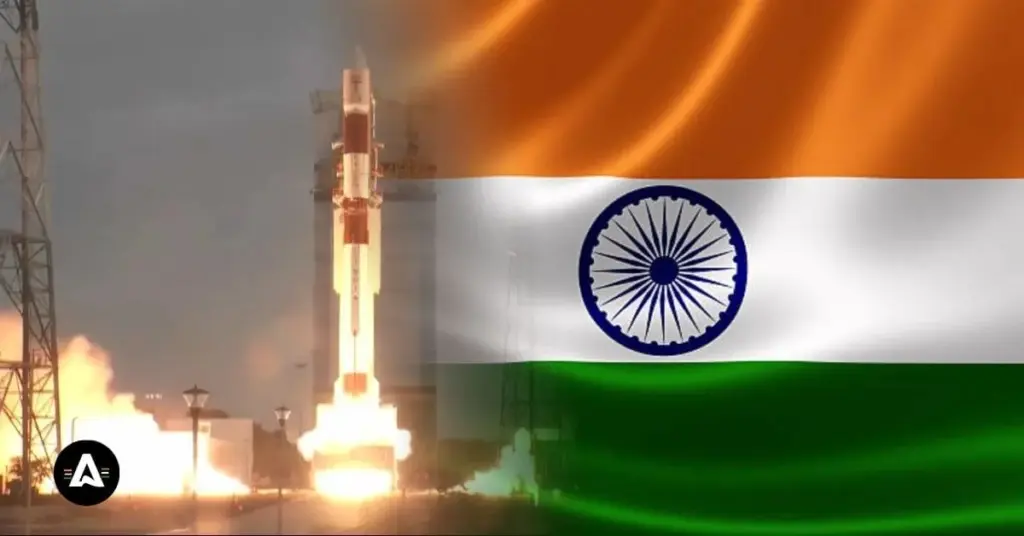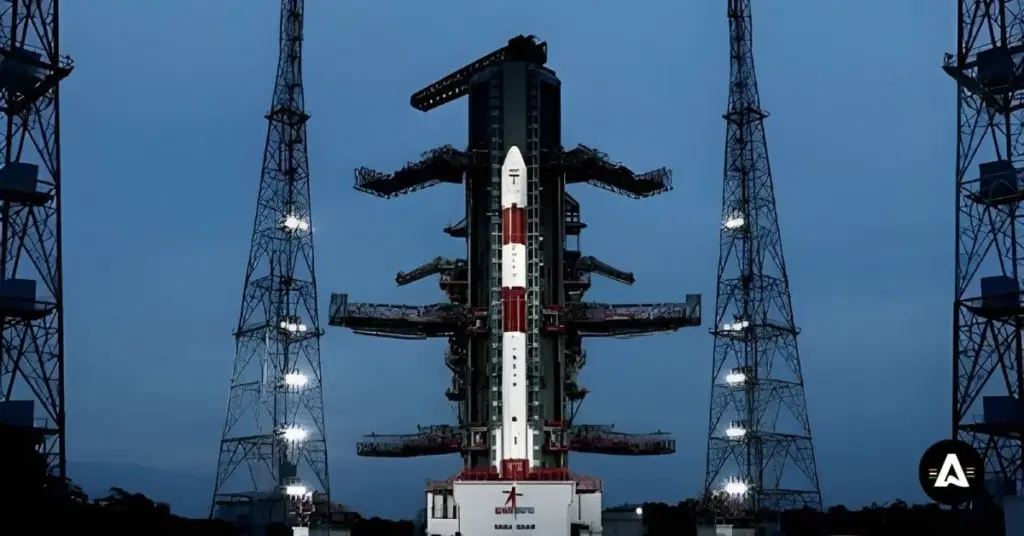Chandrayaan 3 Mission: Enormous Leap Forward in Space Research
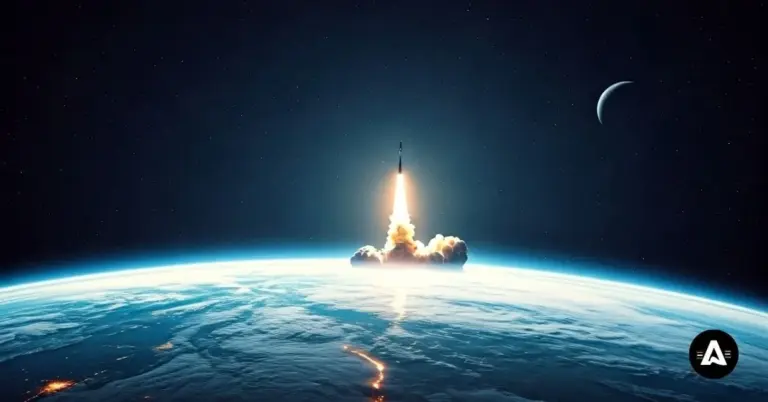
Chandrayaan 3 made a safe and soft landing near the lunar south pole. This made India the fourth country to do this on the moon.
The mission came with new tools, like the Vikram lander and Pragyan rover. These were used to do different science experiments on the moon’s surface.
The main goal was to check out the south pole region. India wanted to learn more about water ice and the moon’s rocks there to help with future space exploration.
ISRO launched this mission from Sriharikota. The team used a launch vehicle called LVM3 and made the moves needed to get to the moon.
Chandrayaan 3 made India stronger in the space world. The mission also showed all people that ISRO can do great things in technology.
Introduction
India’s Chandrayaan 3 mission was an important step in how people explore the moon. The Indian Space Research Organization, which is also known as ISRO, led the mission. The main aim of the Indian Space Research Organization mission was to make a safe landing and check out the moon’s south pole. The spacecraft used some of the best tools to study the lunar surface and learn new things about it.
With the successful landing of Chandrayaan 3, India has proved that it can do great things in space exploration. This win has put India in a top place when it comes to missions about the moon. It has also made new tools and ideas important for the future. These moves will make coming trips better, help people learn more, and push the world to do more in studying the moon, celebrating with chants of Bharat Mata Ki Jai.
The Genesis of Chandrayaan 3
India’s space agency, ISRO, has been on a long journey in space exploration. After Chandrayaan 2, India wanted to finish what it started by making a soft landing on the lunar surface. This is what led to Chandrayaan 3, the next big effort. The plan was to fix the problems with the last try and to help India get better in space exploration with its new spacecraft.
The team behind Chandrayaan 3 used what they learned before to try new things and to make sure everything works well. This mission was a strong answer to the problems faced in the past. It lets India’s science teams study the lunar surface even more and move their space work forward.
India’s Journey in Lunar Exploration
India began its journey in exploring the moon with Chandrayaan 1. This was the mission where ISRO started to work on space research. Chandrayaan 1 helped a lot by finding proof of water molecules on the moon. This made many people in India and from other places more interested in the mission around the moon’s orbit. After that, ISRO worked on Chandrayaan 2. In this mission, ISRO wanted a soft landing on the moon, but it faced trouble during the last part of coming down.
Many people compare the work done by ISRO with that of NASA, the former Soviet Union, and the Japan Aerospace Exploration Agency. This shows how strong India’s will is. Every new mission made ISRO more set on its goal in space exploration, especially with the moon. ISRO improved its systems and launch vehicles each time. Their work showed skill and a strong wish to always do better.
India is now one of the top countries in space exploration. The country has always wanted to find new things in science. With Chandrayaan 3, India showed the world that it will keep trying and not give up. The country is ready to keep moving ahead, even when there is so much global competition in space exploration.
Lessons Learned from Chandrayaan 2
The Chandrayaan 2 mission had issues with the propulsion module and the soft landing steps. ISRO looked at what went wrong in the mission to learn from it. They made a new plan for the next mission. This new plan checked for many problems, like the engines maybe not working or the sensors maybe not showing the right numbers. ISRO worked to fix these problems before the mission launched. This helped to lower the risks and made the mission much safer.
To help the lander have a safe landing on the lunar surface, ISRO made the landing area bigger. This change gave the team more options to pick the right spot. The lander also got more fuel. With this, it could move and get to where it needed to go on the lunar surface.
The data from the Chandrayaan 2 orbiter helped ISRO get better at their work and find new spots to land. They added upgrades for the mission like stronger legs for landing and more solar panels to get extra power. These upgrades made sure the mission could keep going, even if things did not work out as planned. All of these things show that ISRO is always trying to make the mission better. Even after having problems before, they keep finding new ways to get the work done.
Objectives and Scientific Goals
Chandrayaan 3 had clear goals with the scientific tools it brought to the moon. The mission wanted to find water ice there. It also wanted to learn more about the moon’s rocks and soil. This was all done to help space exploration move forward.
Prime Minister Narendra Modi spoke highly of the mission. He said that the mission was in line with what many other countries want to do to learn more about the moon. The mission did tests on the soil and the rocks found there. The results from these tests will be used for new studies in the future. Chandrayaan 3 proved that India is making progress in knowing more about the land that is not on earth. It also showed that the mission is an important step for India in giving something to space exploration all over the world. The work done by the mission points out how much Modi and India want to help with reaching big goals in space exploration.
Key Mission Objectives
The mission objectives of Chandrayaan 3 focused on finding out more about the south pole of the moon. The mission had some main goals:
- Showing how to do a safe and soft landing on the lunar surface.
- Testing how the Pragyan rover can move across the surface and do tests on the moon’s rocks and soil right there.
- Finding out more about water ice in the dark craters at the south pole region of the moon. This can help make new space missions better in the future.
- Running scientific tests using the on-board tools to study minerals and see what the lunar surface is made of.
These aims were in line with what ISRO wanted to do. ISRO needed to prove what it can do and answer the questions about space and the moon. By working with Pragyan, the team was able to get some new knowledge. This new learning will help with more projects about the moon in the next years.
Scientific Experiments on Board
Chandrayaan 3 took new tools and equipment to the moon. The team wanted to do several science tests. Scientists aimed to see if there is water ice on the moon’s surface. They also wanted to find out more about what the rocks on the moon are made of. Another goal was to use new kinds of technology on the moon.
Pragyan is a rover that has six wheels. It came with the Alpha Particle X-ray Spectrometer (APXS) and the Laser-Induced Breakdown Spectroscope (LIBS). These tools help us know what elements are in the soil and rocks found near the south pole region. Pragyan used these tools to find out what the land at the south pole is made of.
The lander module used one tool called ChaSTE to check the way heat moves on the moon’s surface. It used another tool, part of its scientific payload, called ILSA to find out about shakes under the ground. These were important because they helped people learn more about what is under the moon’s surface. This made science research better. With these tests, Chandrayaan 3 helped open up new ways for us to work in space in the future.
Understanding the Spacecraft Design
The Chandrayaan 3 spacecraft, which includes a Propulsion Module (PM), is a great example of hard work in engineering. It has important parts like the lander and rover. The spacecraft also has special systems that help it move through space. Its smart design kept it steady during the way down. It helped to make sure there was a successful landing on the lunar surface.
With special tools for doing tests and looking at the moon’s ground, the rover configuration and lander showed new technology made by ISRO. The mission was a big win for ISRO. It made everyone in ISRO feel proud as the mission reached new goals in space exploration.
One thing that made this spacecraft special was how strong it was. It could work well, even with the tough conditions on the Moon. This showed that ISRO is good at using new space technologies. They can deal with hard problems when doing space exploration beyond Earth. This also helps them push the limits of what we know about space and the ways we can explore it.
Vikram Lander Module and Its Features
The Vikram lander shows how new space ideas can work well. It comes with tools like the Laser Doppler Velocimeter and cameras. These help find dangers on the moon. They make the landing safe even if the ground is rough for the lander.
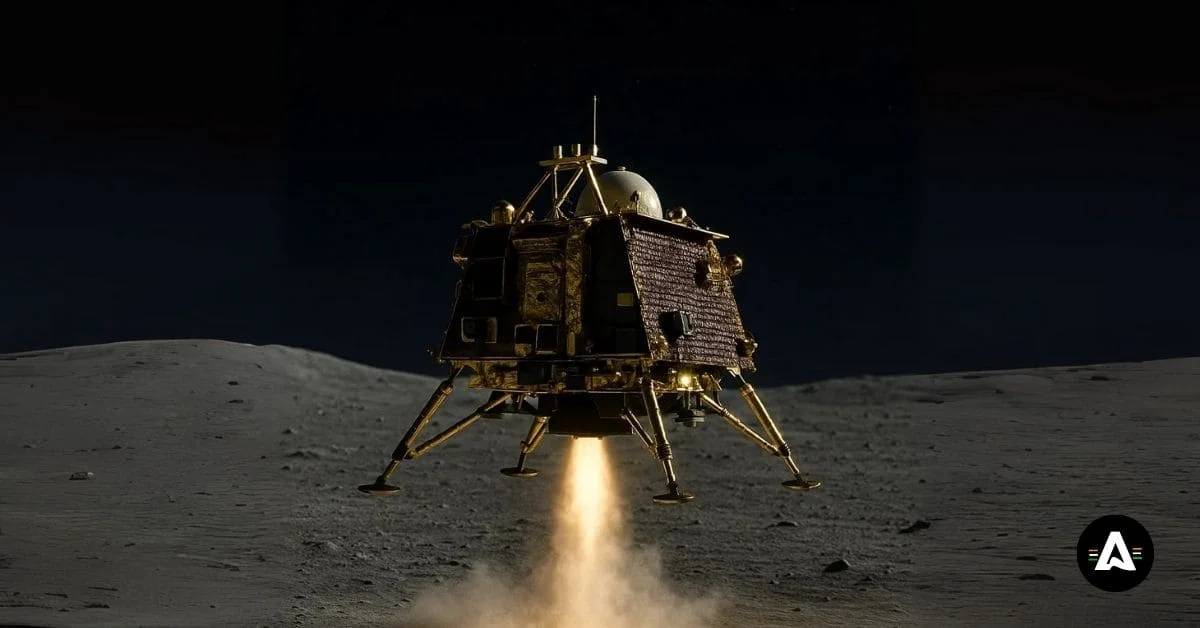
Vikram was designed to work for one lunar day, which is about 14 earth days. It was built strong so that it could handle the unknown on the moon. Inside Vikram, there were tools like ChaSTE that check heat, and ILSA that looks for shakes and moves in the ground. The tools were there to help Vikram send back important information about the crust and lower parts of the moon. It could also give info about the moon’s thin air.
With a simple look and smart technology, the Vikram lander shows that India can build new things. It also proves that they can do the work needed for exploring the moon.
Pragyan Rover and Payload Innovations
The Pragyan rover, with its smart design and new technology, helped find answers on the lunar surface. It was made for careful work and clear science, so it could be very exact in what it did. Pragyan used tools like the Alpha Particle X-Ray Spectrometer (APXS) and Laser-Induced Breakdown Spectroscopy (LIBS). With these, it could look at the basic makeup of stuff found near the moon’s south pole region. This helped us know more about the moon and its south pole.
Pragyan moved easily over many types of ground on the moon. The rover looked closely at the soil and checked the different features of the surface. Even though Pragyan was light, it was strong and could keep going in tough areas. This showed that india can build new and strong machines. The mission also showed that india can make advanced technology and do hard jobs carefully.
With strong technology and a tough build, Pragyan was able to get important data from the lunar surface. This work gave a good base for future missions to the moon. The information that Pragyan found will help shape the way people explore the moon next. It will also help us better know about the moon’s rocks and surface.
The mission showed that India is really good at making spacecraft and is serious about moving ahead in space exploration. It showed that they want to make the best use of payloads for missions that go to the hard south pole region of the moon. This work helps us all learn more about the south pole and how to work better in space.
Mission Timeline and Major Milestones
Chandrayaan 3 started its journey from the Satish Dhawan Space Centre in July 2023. ISRO had good planning for this mission. The launch was done with the LVM3 vehicle. After the launch, the team made smart moves when the spacecraft was in orbit.
The lander made its safe landing on August 23, 2023, which is now celebrated as National Space Day. This was a big day for India. Everyone felt proud. ISRO showed the world that they can do tough space missions. The safe landing helped India move ahead in space work. Now, there is more hope for what the lander and ISRO can do next.
Launch and Journey to the Moon
Phase | Date | Details |
|---|---|---|
Launch | July 14, 2023 | LVM3 vehicle successfully propelled Chandrayaan 3 into an elliptic parking orbit. |
Lunar Orbit Insertion | August 5, 2023 | Achieved orbit size of 164 km x 18074 km. |
Lander Separation | August 17, 2023 | Detached propulsion module for independent manoeuvres. |
Lunar Landing and Surface Operations
The south pole of the moon had a special day on August 23, 2023. On this day, Vikram made a successful landing at the south pole of the moon. The lander slowed down with great care. There was control in every part of what the mission did. This showed skill at every step of the mission.
After landing, the Pragyan rover came out and went to the moon’s south pole. Its job was to look around and do some science work there for one lunar day, which is about 14 Earth days. The rover did its job well on the surface. India showed the world its skills in space with this.
Pragyan sent back data to both the Earth and the moon at this time. It kept trying to gather more information from the moon’s south pole until its mission ended.
Global Significance and Impact
Chandrayaan 3 was a big step for India in space exploration. The mission showed the world that India can keep up with big names like China and NASA. With this mission, India became the fourth country to make a soft landing on the moon. This move put India on the map as an important name in the world of space travel.
One of the main goals of Chandrayaan 3 was to look for water ice at the moon’s south pole. This work is important for any future trips to the moon. It can help us learn more and maybe even use the resources that are already there. By exploring places no one has gone before at the south pole of the moon, India has shown its interest in learning more about the moon. India also wants to work together with other countries in space exploration.
Chandrayaan 3’s success shows that India is ready to work with other countries in space technology. By joining hands with other nations, the mission lets India help not only itself but also support the progress of all people in learning about outer space. The mission stands as proof of India’s growing skills in space research. It shows that India is ready to go beyond limits for science and new ideas.
India’s Place in International Space Research
India has come a long way in global space exploration. It now stands with big names like the former Soviet Union, NASA, and the Japan Aerospace Exploration Agency. India’s hard work and what it has done, especially with missions like Chandrayaan 3, show the country’s strong focus on space exploration. The results it has gotten are both real and impressive.
Indian scientists have learned a lot from the materials they found near the south pole of the moon during Chandrayaan 3. This has made India more important in talks about the moon and space visits. The things they found have helped make India’s name better known. Now, countries like South Africa see India as a trusted partner when they look for good facts and data for their own space work. India has also taken part in some of the biggest space projects in the world. This has helped India become one of the top partners for helping with new and exciting plans all over the globe.
Technological Advancements for Future Missions
The success of Chandrayaan 3 has helped open the door to new advanced technologies for future missions, including RTI applications. With better payloads and updates to navigation, ISRO can now go for bigger space exploration plans. This will help them discover more and move forward in the world of space.
The things found by this mission help us learn more about our own habitable planet Earth. The discoveries also let us go to new places and find out more about them. Pragyan checks out different elements there, and this could help people later if they want to get resources from other worlds.
ISRO’s plan uses these new ideas to help people live and work on the moon. This plan will also make a good base for future space exploration. It will help things last for a long time.
Conclusion
The Chandrayaan 3 mission is a big step for India in space exploration. It shows all the hard work the country put in to learn more about the moon and try out new tools. There was a successful landing in this mission. They used some new technology, too. This work builds on what the team learned from Chandrayaan 2. Now, India is in the news when people talk about global space work.
The things we learn from this trip to the moon will give all of us more knowledge. It will help people later when they try new things in space. This Chandrayaan 3 mission makes us better at doing space exploration. If you want to know what comes next in space work, read our new articles and updates.
Frequently Asked Questions
Chandrayaan 3 was built to not be the same as Chandrayaan 2. It was made thinking about what could go wrong, so that the landing at the lunar south pole would be safe. The team made the legs of the lander stronger. They gave it more space to land. Better sensors were put in as well. This made it work better. ISRO also took help from the Chandrayaan 2 orbiter to get ready for the landing at the lunar south pole.
The Chandrayaan-2 mission to the moon lasted for one lunar day. A lunar day is about 14 Earth days. In this time, the Vikram lander and Pragyan rover did their jobs on the lunar surface, focusing on the objectives of scientific payloads. Their design let them make good use of the short time. So, they were able to get the most data possible in those days.
The Pragyan rover had tools and scientific instruments on it. These let the rover study the Moon’s ground and run tests to help people know more about Earth’s moon. At the same time, the Vikram lander acted as a link for communication. The lander helped send important information from the rover back to people on Earth and then to mission control. The use of both the lander and Pragyan gave us new data about the Moon.
Even though there was not much daylight on the moon, both the Pragyan rover and the Vikram lander finished what they set out to do. This has helped us learn a lot about the moon for space research and lunar exploration. Scientists and researchers are still looking at the data they got from this mission. This is helping us get more details about the moon, such as what it is made of and what its ground looks like.
Chandrayaan 3’s tools, called APXS and LIBS, show what the moon is made of. They found water ice and sulfur on the moon’s surface. The team also used seismometers to watch for movements in the south pole region. These findings help us know more about the geology of the moon, especially near the south pole.
ISRO worked with other countries by adding NASA’s Laser Retroreflector Array in the list of experiments for the mission. The information collected from the mission could help future work between ISRO, NASA, South Africa, and other teams. These groups will use what they learn to help each other in new projects for exploring the moon.
This teamwork shows an important move towards working together in space exploration around the world. When different countries join their resources, knowledge, and skills, they can make big new discoveries and push space science forward. By working as one, they get to share costs and risks. This also helps bring in new ideas, because people from different places bring their own way of thinking and skills to the table.
The use of NASA’s technology in ISRO’s mission shows how important it is for countries to work together. These partnerships help us move forward and learn new things about space. When ISRO and NASA team up, they help push past the limits of what people know. As the world keeps looking into space, working together like this will help us discover more about the universe.
After Chandrayaan 3, ISRO has more missions planned. The missions will go to the south pole of the moon. ISRO and the Japan Aerospace Exploration Agency will do this work together. The mission is called LUPEX. India and Japan want to learn more about the moon. ISRO plans to work with others and use new ideas for the missions. This will help India share its story about its journey to the moon.

